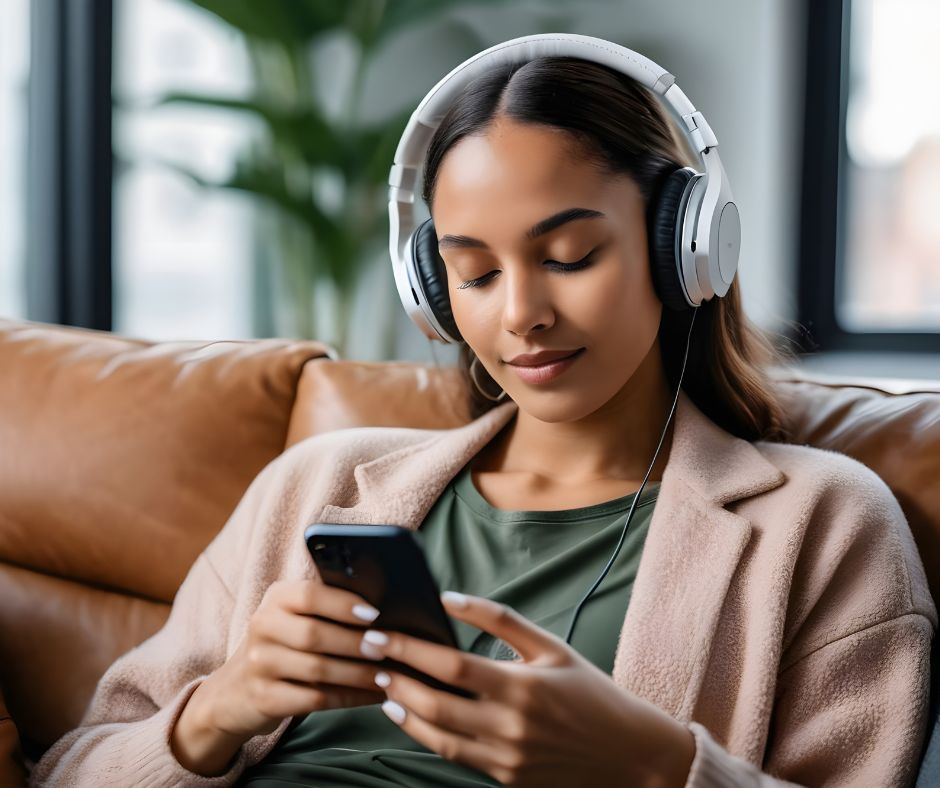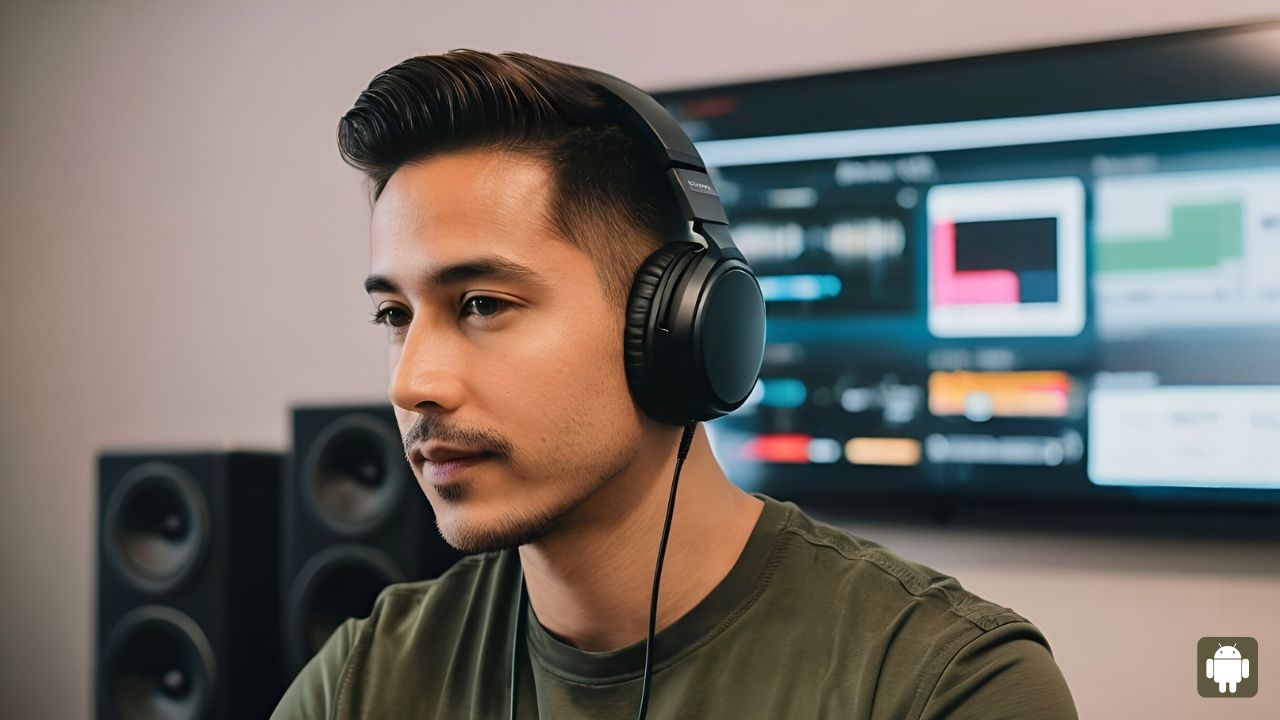Upgrade Your Android Audio Experience
Let’s be honest – most of us listen to music through smartphones, especially when out and about. The convenience of having your favorite tunes on your phone is unbeatable. However, mobile phones, even premium ones, aren’t always designed to provide the best audio experience. You might need to make some adjustments to get the most out of your music. We will show you how to maximize the audio experience in this simple ‘Android for Audiophiles Guide’!
1 Headphone Jacks: Still an Option for Android Audiophiles
One of the great advantages of Android is that many phones still include headphone jacks, making it easier to connect your favorite wired headphones. However, the sound quality you get from the jack isn’t just about plugging in—it depends on two key factors:
The Digital-to-Analog Converter (DAC):
This tiny component inside your phone transforms digital music files into analog signals your headphones can play. Most Android phones, especially those with Qualcomm or Exynos chipsets (common in Samsung devices), have reasonably good DACs built in.
The Headphone Amplifier Circuitry:
Many Android phones fall short here. Manufacturers often neglect the quality of headphone amplification, leading to low-power outputs or noisy circuits. In some cases, interference from other phone components can impact audio clarity. This setup makes it challenging to drive high-quality over-ear headphones with many Android models.
TIP: Start using in-ear monitors (IEMs). Most Android phone headphone jacks can provide sufficient power for IEMs, offering a significant upgrade over the basic earbuds bundled with many devices. For audiophiles, switching to quality IEMs is an easy way to take your listening experience to the next level!
2 Bluetooth Earbuds
If your Android phone lacks a headphone jack, Bluetooth earbuds are an excellent alternative, thanks to advancements in wireless audio technology. While older Bluetooth models often compromised sound quality, modern options have significantly narrowed the gap between wired and wireless listening.
Many premium Bluetooth earbuds now support high-resolution audio codecs like LDAC, aptX HD, and aptX Adaptive, enabling higher-quality sound transmission over Bluetooth. These codecs ensure minimal compression, delivering detailed and immersive audio.
However, keep in mind that to fully benefit from these codecs, both your earbuds and your Android device must support them!
3 USB-C Dongles
If Bluetooth earbuds don’t meet your standards, or if you prefer wired listening, USB-C dongles are a great solution. However, not all dongles are the same.
Passive USB-C Dongles:
These adapters simply pass through the analog audio signal from the phone’s DAC to your headphones. But here’s the catch—not all Android phones support analog audio output via USB-C. Brands like Realme, Oppo, OnePlus, and Xiaomi typically offer this feature, while Samsung phones and Google’s Pixel series often do not.
For phones that support analog output, a passive dongle is an inexpensive and effective solution. However, the audio quality you get depends heavily on your phone’s internal DAC and amplification circuitry.
Active USB-C Dongles:
Unlike passive dongles, active dongles contain a tiny built-in DAC and headphone amplifier. They convert digital audio signals directly from your phone and handle the amplification themselves. Active dongles work with any Android phone, including models that don’t support analog output, such as Samsung and Pixel devices.
Popular options, like Samsung’s official USB-C to 3.5mm adapter, support high-resolution audio, with capabilities up to 384 kHz and 24-bit for superior sound quality.
Why Choose Dongles?
USB-C dongles are affordable, portable, and effective for upgrading your Android listening experience. They pair especially well with high-quality IEMs, delivering superior audio compared to the basic earbuds. However, keep in mind their small size makes them easy to misplace—so keep a backup handy!

3 Portable DACs
For those looking to elevate their audio experience beyond dongles, portable DACs (Digital-to-Analog Converters) are a fantastic option. These devices deliver more power and superior sound quality, making them perfect for audiophiles.
Compact Portable DACs to Consider:
- FiiO BTR5 2021: The most versatile DACs available
The FiiO BTR5 2021 stands out as one of the most versatile portable DACs. It offers premium features like balanced output and support for hi-res lossless audio. With advanced Bluetooth codecs, including LDAC, it doubles as a high-performance wireless headphone receiver. Its built-in battery ensures it can handle high-impedance headphones. - iFi GO Bar: Compact Powerhouse
For those seeking a portable yet powerful audio solution, the iFi GO Bar is an excellent choice. Despite its ultra-compact design, it’s packed with high-end components typically found in standalone players. This tiny DAC offers multiple full-power outputs, making it capable of driving high-impedance headphones with ease. It also supports all major hi-res audio formats, ensuring an exceptional listening experience no matter your setup.
4 Android Audio Processing
Android devices have historically posed challenges for audiophiles due to how the operating system handles audio processing. While high-end DACs can process 24-bit/192kHz files or even MQA (Master Quality Authenticated) audio, Android’s native audio stack traditionally resampled all audio to 48kHz. This limitation affected the fidelity of playback from streaming services like Tidal, Spotify, Qobuz, and Amazon HD, resulting in non-bit-perfect audio.
In 2024, significant improvements have been made in Android’s audio processing. Many newer smartphones, especially those equipped with Snapdragon Sound technology or advanced chipsets, now support bit-perfect audio streaming and playback. These devices can bypass the resampling limitations of Android’s native audio stack, enabling high-resolution audio to be played in its original form without degradation.
However, the availability of this feature depends on the phone manufacturer and software implementation. For older or budget Android devices, resampling artifacts may still occur. Audiophiles seeking to ensure bit-perfect playback can use specialized apps like USB Audio Player Pro (UAPP), which bypass the Android audio stack entirely and provide direct access to external DACs.
In Conclusion
Upgrading your Android audio setup doesn’t have to be complicated. With USB-C dongles, portable DACs, and dedicated apps, you can achieve a noticeable improvement in sound quality. These upgrades are accessible to anyone and can transform your listening experience, allowing you to hear your music as it was meant to be.
For the best results, always pair your upgraded hardware with high-quality music files, such as FLAC or other lossless formats, to fully appreciate the enhanced audio clarity and detail.
Take the first step today and elevate your audio game—you’ll be amazed at the difference it makes!

